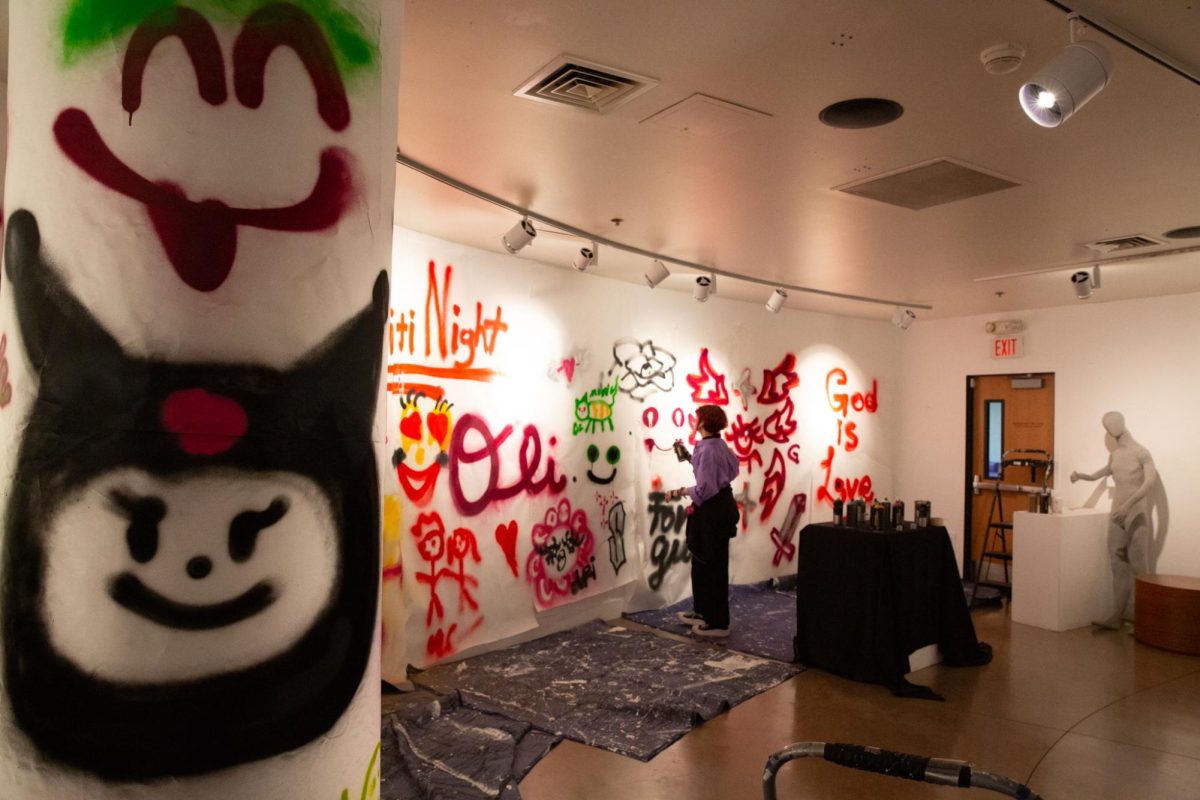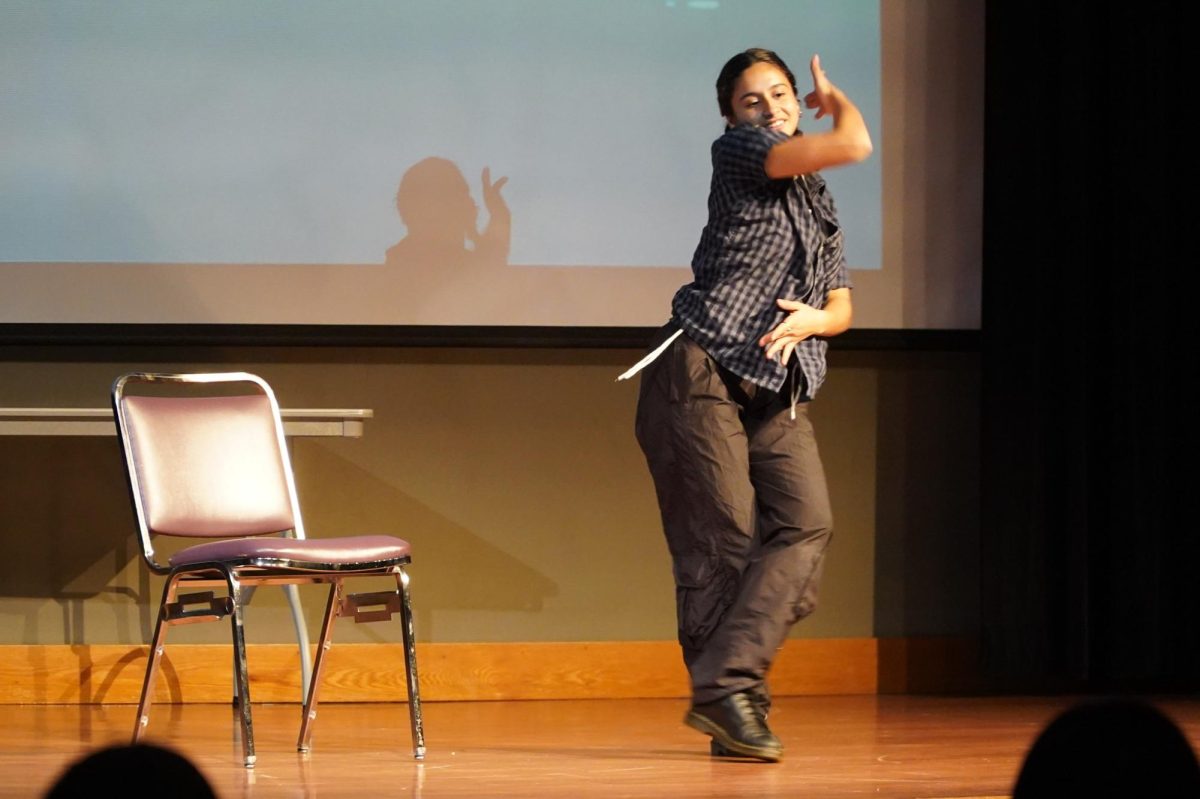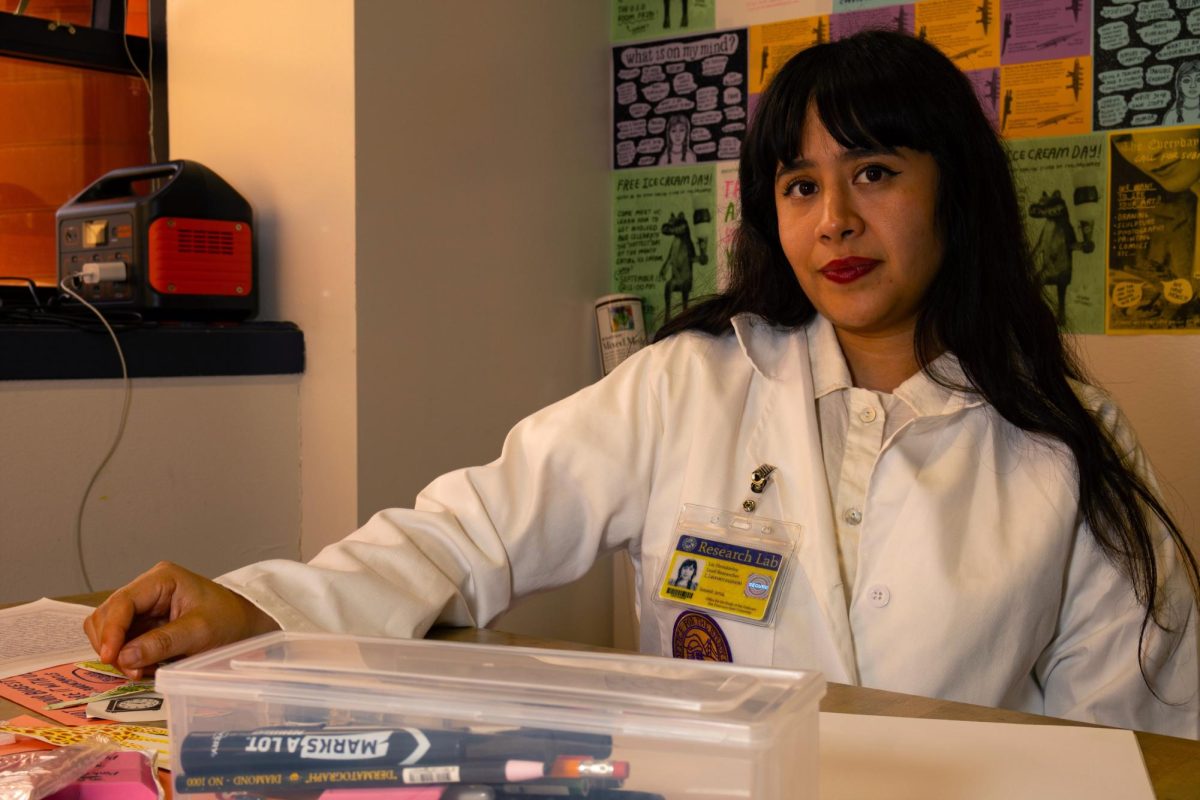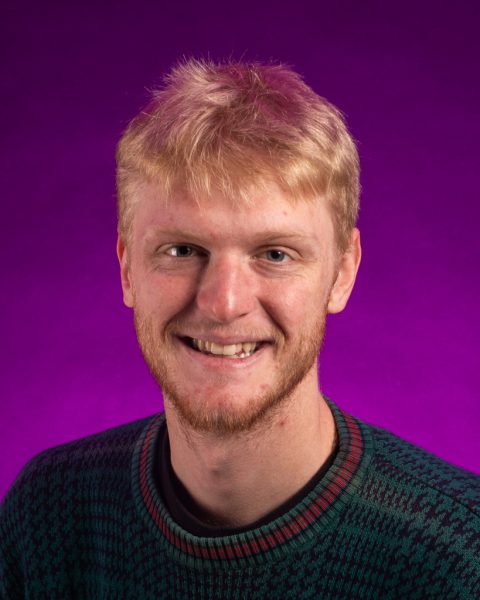There’s a strong chance that while attending an underground punk rock show in Los Angeles, you’ll see a twisted face staring back at you from the back of someone’s shirt or on a sticker placed against a speaker. This would be one of Dead Ed’s Heads.
Ed of “Dead Ed’s Heads” moved to San Francisco in 2024, bringing a punk rock approach to life and art. His influences vary from ‘80s pop culture to the Los Angeles underground rock scene.
Ed grew up in Costa Mesa, California, working in his parent’s motorcycle shop from a young age. He spoke of his childhood lovingly and said his parents did their best to encourage his creativity.
“I grew up just surrounded by art. Anytime my mom and I would go on a vacation, it would be like ‘Alright, let’s go to this city and go see whatever art museums or exhibits they have.’ In high school, I loved to draw,” Ed said. “But I was always surrounded by Garbage Pail Kids and Gremlins. I was seriously into 1980s music and culture.”
Ed said he drew, worked and began skating at an early age. As he got older, ‘80s post-punk, new wave and punk rock became what he called the backdrop of his life and art.
“I want to dance, see rock and roll; punk shows are super fun because everyone’s super chill,” Ed said. “No one is going to judge you.”
While working full-time, Ed began taking classes at Orange Coast Community College. He majored in architecture and was given access to the school’s maker space. The maker space serves as a collaborative environment on campus where students have access to professional-grade resources and materials for science, art and architectural projects.
Steve Fuchs is a professor of architecture at OCC who had Ed in his class; he remembers Ed well and enjoyed supporting him in his creative process. Fuchs managed the maker space at OCC and helped Ed acquire access there, honing his art-making abilities.
Fuchs said he remembered Ed for constantly drawing in class, a practice he encouraged.
“We’re constantly conceptualizing what’s in our minds, just working through the process of what we’re seeing becoming reality. And then through the process of making that sketch or anything, really, there’s a lot of overlapping potentials,” Fuchs said. “When I’m watching Ed go through his process, it’s sort of something many of us go through. We’re seeking something that we’re not sure of yet. And usually, it’s to reflect culture back to itself.”

Fuchs and his colleagues helped secure a $700,000 grant to improve the maker space on campus, giving students like Ed access to materials and tools they wouldn’t usually have.
“I think part of enabling Ed came out of our natural processes as designers and architects,” Fuchs said. “Once he saw that he could also dovetail his art practice with some of the tools we were using, and then expand upon the tools that the maker space offered that were beyond what a classic model-making process would be, I think he caught even further on fire in some ways.”
Fuchs said putting those tools in the hands of students like Ed encourages their creativity and allows them to expand their interests. Ed attended Orange County Community College for three years, consistently drawing and creating work in their maker space and selling his work at different shows, skateparks and events.
During this time, Ed began attending punk shows in the area and hosting pop-up shops outside venues. At his first pop-up, he met Michael Sigur, a local musician who would become a close friend.
Sigur, otherwise known as Juggz, is an Orange County local and plays in his band, Street Goblins, at shows across the valley.
“Ed’s a rad dude. He’s like the epitome of your old school, loc’d out skate punk that does what he feels like as long as he’s having fun,” Sigur said. “The earliest vivid memory I have of him was when he tried sneaking into a bar in Costa Mesa, Orange County to see my band — the Street Goblins — play.”
Ed said his first experience selling his art was at a local show. It took place at a bar that he was too young to enter.
“Right outside the venue was this old rad-looking sedan with a rack of shirts, flannels and handmade stencils sprayed onto this banner posted up in front,” Sigur said. “That kid has his own aura and so does his art. There were these grotesque and sloppy faces, detailed expressions, and depictions, but they were all fun lil’ doodles that stuck out. Each and every one of them, if you saw it on the street or on a wall, his piece would be the most prominent.”
Sigur and Ed attended several shows together, creating art. Sigur said Ed became a well-known community member through his love of music and art.
In 2022, Ed’s longtime partner, Stephanie Eaton, finished her associate degree at OCC and transferred to the University of California, Davis. That event provided the final push he needed to move to San Francisco.
“I love this place — I visited here often, probably four times before I moved here. I said to myself, ‘I’m going to live here one day.’ I love the city,” Ed said. “I always thought it was going to be too expensive for me to live here. There came a point in my life where my girlfriend moved up here over to Davis. I decided I need to get up north; it was time to move to the city.”
Eaton described the process as complicated. Picking up and moving to San Francisco when he was still establishing a reputation in his hometown was a huge decision.
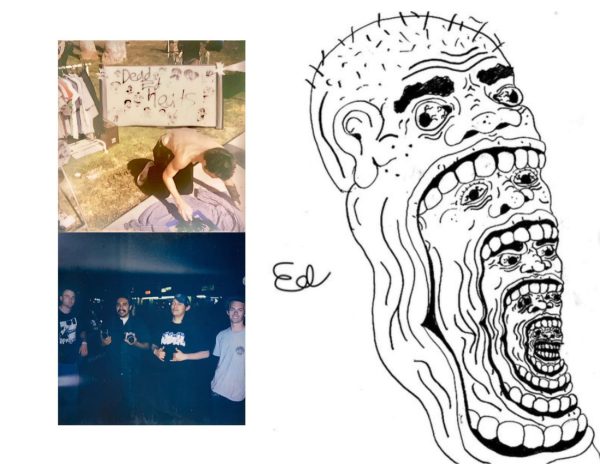
“He was consistently getting asked to vend and was shown a lot of love from the scene down in the O.C. and Los Angeles area. Having to leave that and his friends behind made the move to S.F. hard,” Eaton said. “He was bummed he had to reestablish himself right when things started to really pick up in O.C. He’s getting back into it, though — I think he’s more open to the art show or gallery-type things that go on in S.F.”
Despite the distance between Davis and San Francisco, Eaton and Ed see each other frequently and she said she fully supports his artistic aspirations in the city by the bay.
“I think he’ll love and do them all as long as he can,” Eaton said. “For art, I can see him taking it seriously [or] doing it professionally as long as he’s got creative control.”
Ed decided to attend San Francisco State University for its thriving art scene and urban planning program. He has been passionate about Costa Mesa and Orange County; he said growing up without access to a car presented a roadblock to making friends and exploring the local art and music scenes.
In San Francisco, Ed has built a community for himself due to the city’s more pedestrian-friendly nature. Experiencing life with a robust public transit system inspired him to bring the same infrastructure back to his hometown.
“The plan is to get the urban planning degree and then maybe spend the rest of my life trying to fight for public transportation in Orange County,” Ed said. “I just can’t even imagine how much better the lifestyle would be in Orange County if those kids grew up with a light rail, or even just bike lanes. It’s so beautiful, but they won’t even build a single bike lane. There’s just so much wasted potential down there and I really love that area. I’ll always love Orange County.”
Ed instantly enjoyed SFSU. He said the campus and people are more welcoming than OCC. He regularly sets up his stickers and patches to sell on campus while doing live paintings.
“School’s fun and it’s good to meet a ton of cool people. Finally, I am making friends again.” Ed said. “Popping up, making friends all day long. You get a funnel of people coming by chatting you up, and then leaving and then a new person comes up immediately. I love meeting people.”
Ed works a full-time restaurant job, attends classes, and creates and sells artwork. He’s working hard to create a similar network to the one he had in Orange County. He’s gotten his stickers into a few skate shops and is working on getting them into more. He’s recently created five new stencils and draws every day, even in class — continuing the tradition he established at OCC.
“I’ve had moderate success so far — I missed the last Ruka show, and one of the friends I made up here told me that she would have been able to get my art in there. So, I missed that opportunity, which is okay because new opportunities come around all the time,” Ed said. “Since then, I did one art show with some DIY punks in the Mission where I painted on their wall, and I was like, ‘Holy crap! I love these big mural pieces,’ which kind of got me into the big cardboard canvas paintings.”
Ed said he’s constantly working to balance all of his responsibilities, which can be a struggle. There’s always something to do, but he doesn’t want art to become a chore instead of a passion.
“I do it in a way where obviously I’m not trying to monetize my skating; I’m not trying to monetize playing the bass,” Ed said. “The only thing I’ve monetized is popping up art, but I did it in a way where it doesn’t feel like a job to me. It’s not a necessity.”





